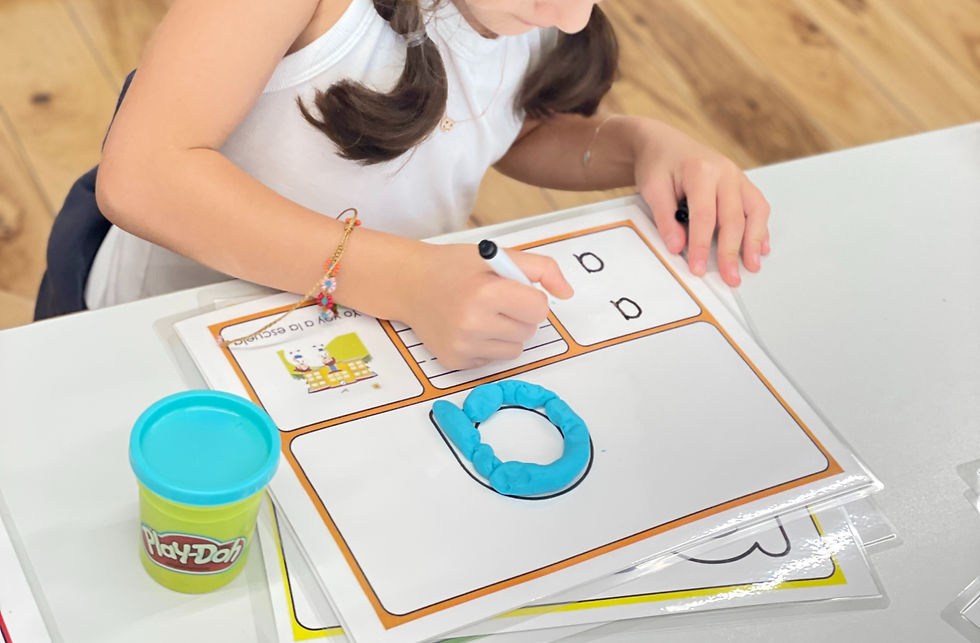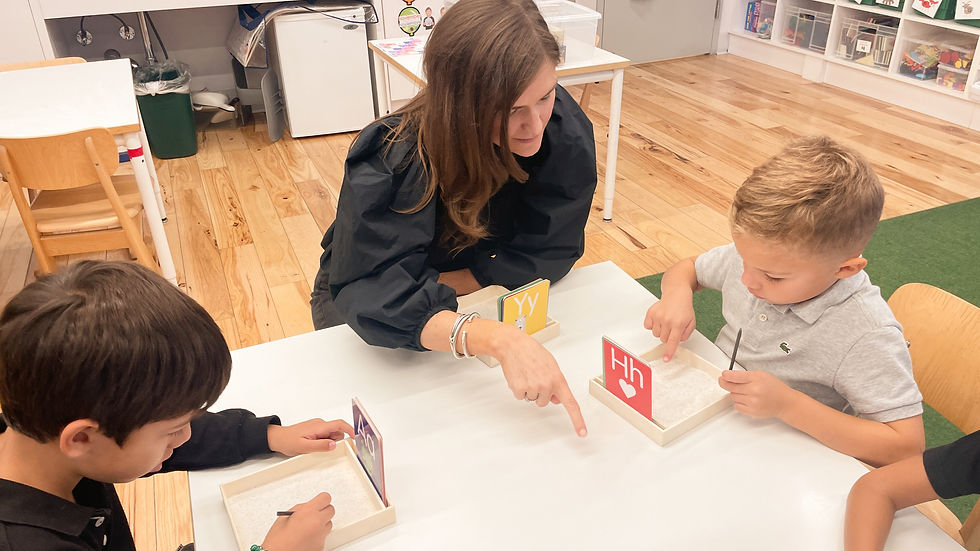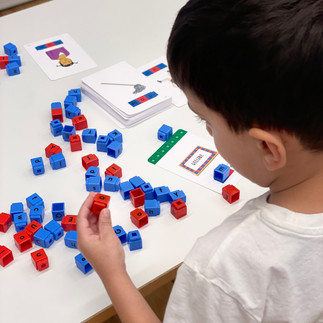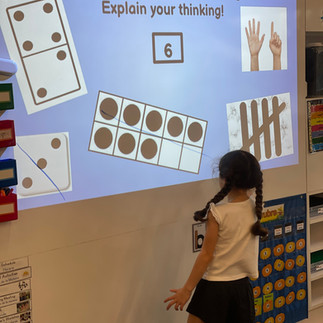Kindergarten Readiness: Strategies for Confident Learners
- Kellie Smith

- May 29
- 6 min read
Updated: Jul 21
By Kellie Smith | Little Learning Table
Navigating the transition to kindergarten can be an overwhelming experience for both parents and children. However, with the right strategies in place, you can help your child develop the confidence they need to thrive in their new learning environment.
As a parent, it's essential to understand the developmental milestones that signify kindergarten readiness. These include cognitive skills such as the ability to follow directions, recognize letters, numbers, and colors, as well as social and emotional skills like the ability to take turns, share, and communicate effectively with peers and adults.
To support your child's readiness for kindergarten, it's important to create a nurturing and stimulating home environment that encourages learning and exploration. You can do this by setting aside dedicated time each day for activities that promote cognitive development, such as reading books, playing educational games, and engaging in creative arts and crafts projects. In addition to focusing on academic skills, it's also crucial to help your child develop social and emotional intelligence. Encouraging positive behavior, teaching problem-solving skills, and fostering a sense of empathy and resilience are all key aspects of preparing your child for success in kindergarten.
At Little Learning Table, we understand the importance of taking a holistic approach to kindergarten readiness. Our expertly curated resources and routines are designed to support the whole child and the whole home, empowering families to raise confident learners in healthy, intentional environments. By blending early education, child development, and low-tox living principles, we offer a unique and modern approach to preparing children for kindergarten. Our digital resources, video tips, and tutorials provide parents with the tools they need to create a calm and connected learning environment that sets the stage for academic and personal success. With over 15 years of experience as an early childhood educator, our founder is dedicated to providing trusted and developmentally grounded guidance for parents navigating the journey to kindergarten readiness. Together, we can help your child embark on this new chapter with confidence and enthusiasm, setting them up for a lifetime of learning and growth.
Below are some ideas of ways you get your child ready for an important year of learning.
Building Handwriting Skills
In kindergarten, children begin learning how to write, and handwriting expectations can vary from school to school. Some programs focus on uppercase letters, others on lowercase, and some introduce both. Regardless of the approach, strong fine motor skills are key to helping your child become a confident writer.
Over the summer, you can support your child by encouraging fun, hands-on activities that strengthen the small muscles in their fingers. Here are a few playful ways to build those skills:
Strengthen hand and finger muscles

Playdough play is a fun way to build hand strength. When kids squeeze, pinch, roll, and shape playdough, they’re exercising the muscles in their hands and fingers which is great preparation for writing and other fine motor skills!
Scissor Skills allows children to cut with child-safe scissors, helping to build hand strength and control. Have your child start with cutting straight lines and gradually move to curves and shapes.

Use chopsticks to pick up pompoms and place them on a large letter or in a container. Bonus: You can tie in some math by asking your child to count the pom poms.
Stringing beads or pasta is a great way to boost hand-eye coordination and strengthen those small muscles in the fingers. It’s a simple, fun activity that helps build the control kids need for writing and other fine motor tasks.
Squeezing activities, such as using a spray bottle to water plants or create art, help build hand strength. These kinds of tasks are fun and also give those little hand muscles a great workout—perfect for getting ready to write!
Improve Hand-Eye Coordination
Try tracing shapes, lines, or letters to help your child get used to the motions they'll need for writing.
Activities like mazes and dot-to-dots are great for building focus and coordination through fun, guided movement.
Develop Pencil Grip and Control
Give your child plenty of chances to hold and use pencils, crayons, or markers to build a natural, comfortable grip.
Practice drawing simple shapes—like lines, circles, and crosses—which are the building blocks for writing letters.
Incorporate Play and Fun

Keep things interesting with playful materials like sand, water, playdough, or even shaving cream for writing practice.
Use games and creative play, such as building blocks, puzzles, or drawing their favorite things, to develop fine motor skills in a joyful way.
Important Considerations
A little bit each day goes a long way! Short, consistent practice helps strengthen skills over time.
Focus on effort and enjoyment, not perfection—encourage your child and celebrate their progress along the way.
Routine
Create a visual schedule for your child to help them plan their day. This will help them become accustomed to the structure and routine of a classroom.
Jobs
Give your child some responsibility, such as setting the table, making their bed, helping put away silverware, or cleaning and watering plants. Most kindergarten classrooms have jobs, so this helps your child get used to helping out.
Practice Saying Goodbye
Having a sweet and consistent way to say goodbye, just between you and your child, can help ease transitions. It might be a secret handshake, a special kiss, or a quick rhyme you say together. Let them know you'll use this same goodbye every day at drop-off so they know what to expect.
Create a Special Goodbye Ritual - Having a sweet and consistent way to say goodbye, just between you and your child, can help ease transitions. It might be a secret handshake, a special kiss, or a quick rhyme you say together. Let them know you'll use this same goodbye every day at drop-off so they know what to expect.
Teach a Simple Coping Strategy – Children feel more confident when they have tools to manage their worries. One helpful idea is to teach your child a calming phrase they can say to themselves when they feel nervous, like: “I am safe and cared for.”“My grown-up will come back. “I can be brave, even when I feel a little scared.”Practicing these ahead of time gives your child something reassuring to hold onto when big feelings show up.
Send a Comfort Item - A small object from home can go a long way. Give your child something simple to keep in their pocket or backpack, such as a smooth pebble, a family photo keychain, or a tiny piece of their favorite lovey. Let them know that touching it is a little reminder that you're thinking about them.
Read "The Kissing Hand" – One of my favorite children’s books for easing separation is "The Kissing Hand" by Audrey Penn. I strongly encourage families to read it together before the first day of school. After reading, open up a conversation with your child about saying goodbye and feeling connected even when you're apart. You might even create a special goodbye phrase or gesture inspired by the story!
Social Skills
One great way to build your child’s confidence is by acting out common school situations together. Try role-playing activities like introducing yourself, asking a friend to play, or seeking help from a teacher. Kids learn best when they see and try things for themselves, so keep it simple and focus on one skill at a time. Practice it until it feels natural, and they can do it independently.
Talk Through Worries Together
Set aside time to gently check in with your child about how they’re feeling as the first day of school approaches.
It’s completely normal for questions like “What if I can’t find a friend?” or “What if I get lost?” to come up. Even if the worries seem small or unlikely to us, they feel very real to your child. Let them know it’s okay to feel nervous and thank them for opening up. Then, brainstorm ways to help them feel more prepared. For example:
Worry: “I won’t remember my bus number.”Solution: Write it on a small card and tuck it inside their backpack. Ask the school if they’ll offer a practice ride.
Worry: “I might have an accident.”Solution: Pack an extra set of clothes in their backpack and walk them through where the bathroom is.
Worry: “I’ll get lost.”Solution: Visit the school ahead of time and practice walking to their classroom together.
I am Here to Help
I know how important this year is for you and your child. At Little Learning Table, we are here to support you every step of the way. Together, we can ensure that you and your child (or students) have a successful and fulfilling year in kindergarten.
As your child’s parent, remember that your worries can easily become your child’s worries. Try not to get bogged down by concerns. Instead, help your child view kindergarten as a year filled with fun, growth, and learning. Remind them that they are totally equipped and ready for whatever the year may bring. And, as always, you will be their comforting place through it all.
















Comments